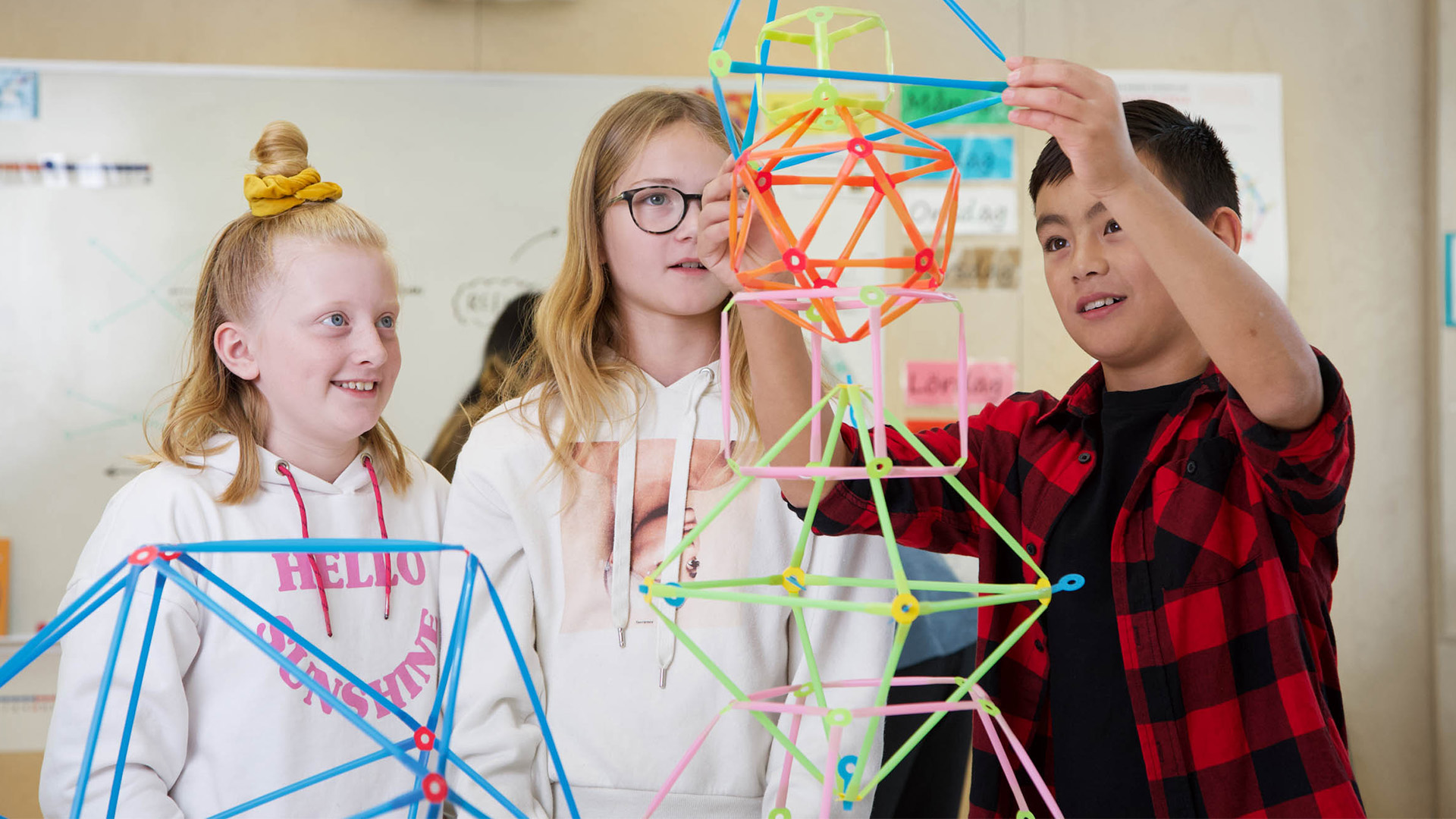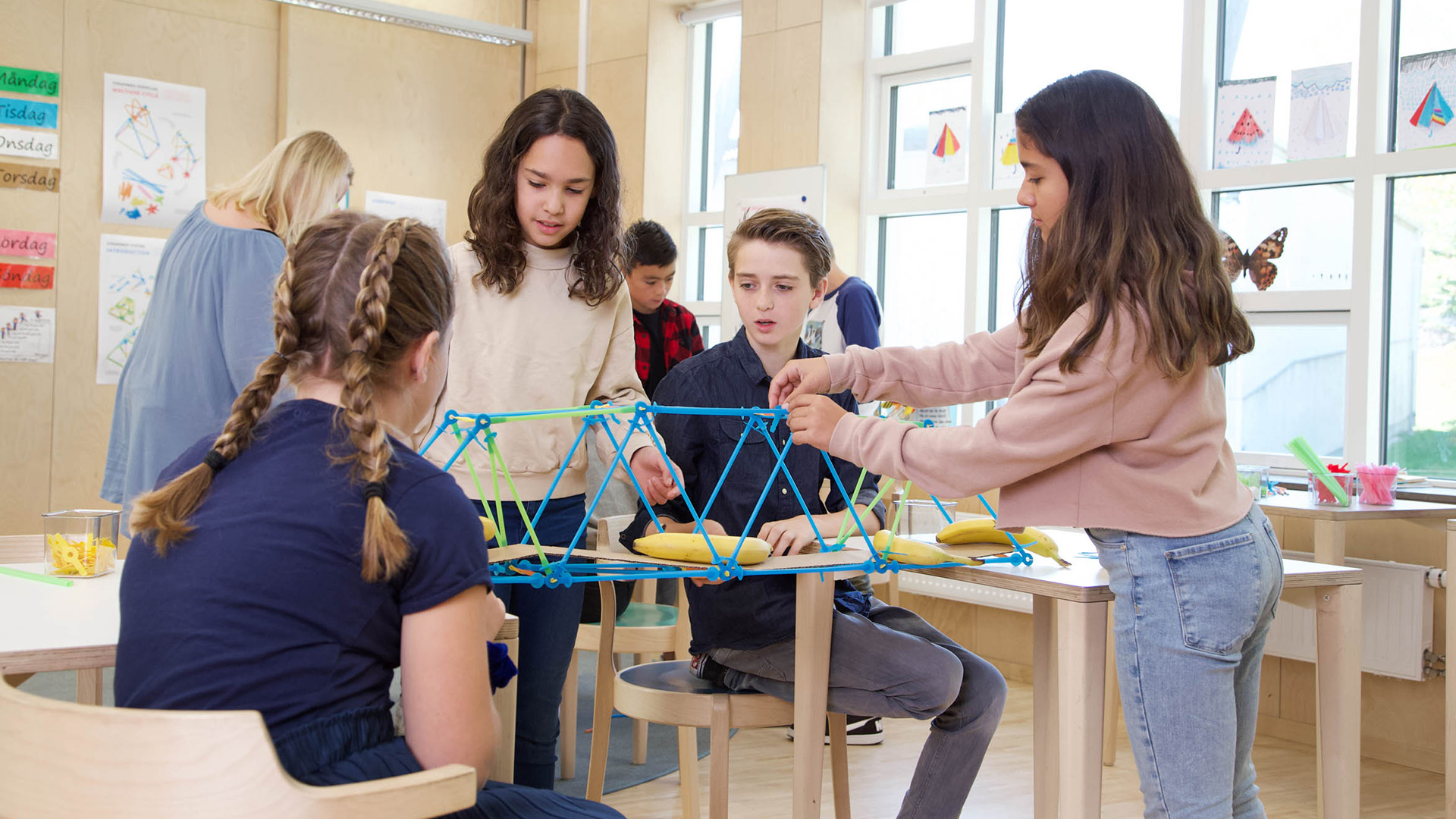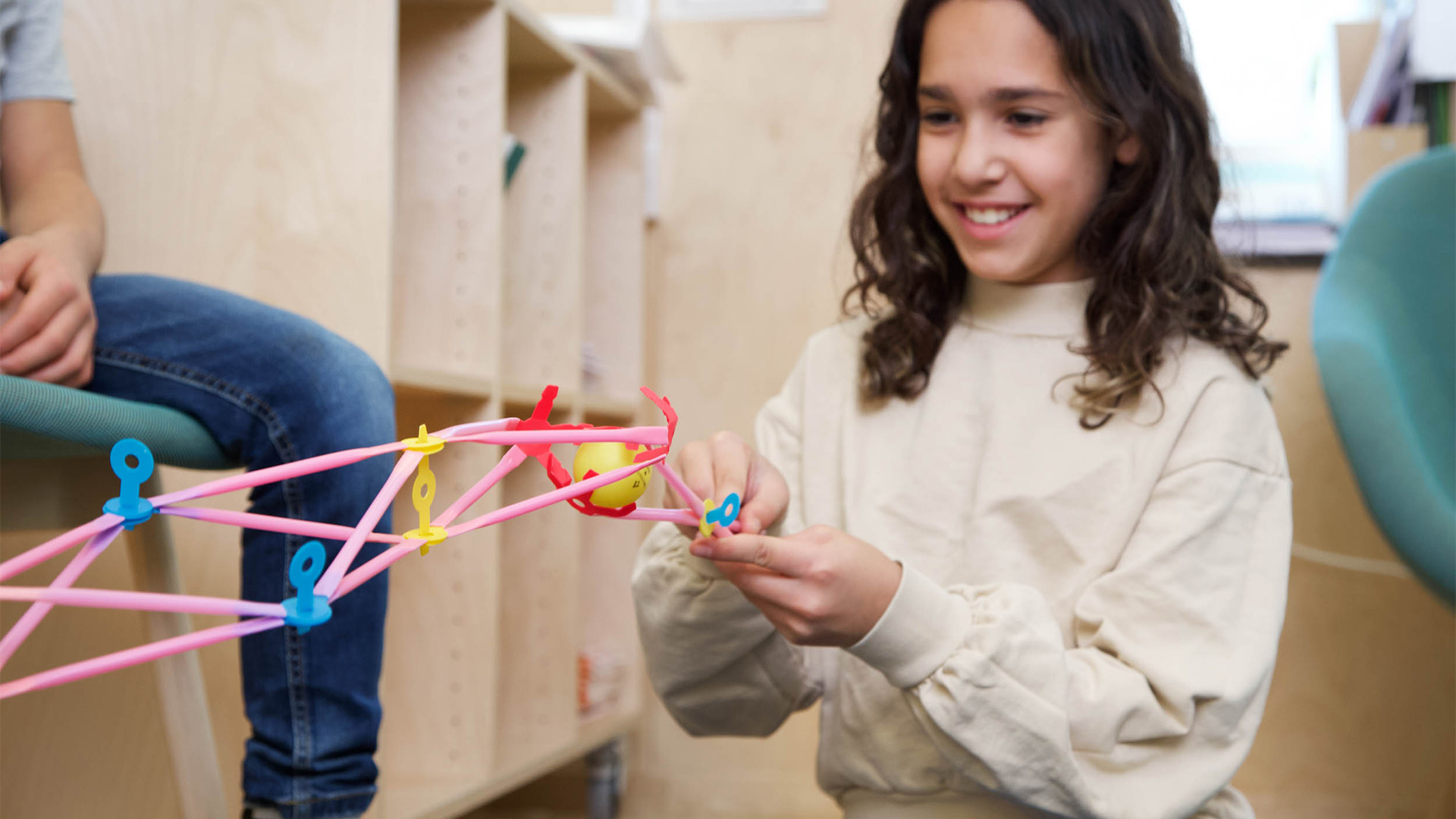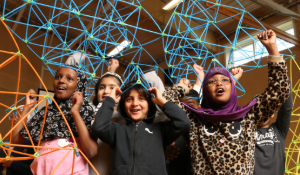Nurturing Curiosity: The Nuances Between STEM and STEAM in UK Education
🗳️ STEM v STEAM - Have Your Say
In recent years, there has been a growing interest in enhancing educational curricula with approaches that prepare learners for the complexities of the modern world. Two prominent educational frameworks—STEM (Science, Technology, Engineering, and Mathematics) and STEAM (Science, Technology, Engineering, Arts, and Mathematics)—have emerged as pivotal in this endeavour. While both aim to equip learners with critical skills for the future, they differ in their inclusion of the arts, offering unique benefits and challenges. This article delves into the differences between STEM and STEAM, highlighting their respective advantages and linking these to the National Curriculum for England and the Curriculum for Excellence in Scotland.
Understanding STEM and STEAM
Before we start to look at the subtle and distinct differences between these two integrated approaches to learning it’s important to make it clear what each acronym means and the rationale behind their existence.
What is STEM?
STEM stands for Science, Technology, Engineering, and Mathematics. It is an educational approach that emphasises these four disciplines, often integrating them into a cohesive learning paradigm based on real-world applications. The goal of STEM education is to develop learners' problem-solving, critical thinking, and technical skills, preparing them for careers in a rapidly evolving technological landscape.
What is STEAM?
STEAM takes the STEM framework a step further by incorporating the Arts into the curriculum. This inclusion aims to foster creativity and innovation alongside technical skills. The arts component can include visual arts, music, drama, and more, encouraging learners to approach problems with a broader perspective and integrate creativity into their scientific and technical learning.

The Importance of STEM and STEAM in Modern Education
STEM education is essential in preparing learners for future careers by addressing the increasing demand for skilled professionals in science, technology, engineering, and mathematics fields. It focuses on developing analytical and technical skills necessary for roles in engineering, IT, and research. On the other hand, STEAM broadens these horizons by integrating the arts, preparing learners for emerging fields where creativity and technical skills intersect, such as design engineering and multimedia arts. This holistic development includes fostering emotional intelligence, empathy, and creativity, making learners well-rounded and adaptable to various career paths.
Both STEM and STEAM enhance critical thinking and problem-solving skills, but they do so in slightly different ways. STEM education emphasises structured problem-solving and empirical learning, equipping learners with the ability to tackle complex technical issues through logical reasoning and data analysis. Conversely, STEAM encourages creative problem-solving by incorporating artistic methods, enabling learners to think outside the box and develop innovative solutions. This interdisciplinary approach fosters a deeper understanding of problems by allowing learners to view them from multiple perspectives.

STEM - The Core Pillars of Knowledge
UK Curricula and STEM
In the National Curriculum for England and the Curriculum for Excellence in Scotland, the foundational principles of STEM are seamlessly integrated into subjects such as Mathematics, Design and Technology, and Computing. Both curricula place a strong emphasis on nurturing scientific inquiry, technological literacy, and mathematical proficiency.
The Creative Alchemy of STEAM
Incorporating the Arts into STEM creates an environment where learners not only grapple with scientific concepts but also unleash their creativity. Think of it as the difference between building a functional bridge in STEM and crafting a visually captivating, yet structurally sound, bridge in STEAM. This isn’t to say that there is no creativity in STEM, it just means that at its core it offers a more methodical approach to problem-solving.

Bridging the Gap - STEM vs. STEAM
Focus and Perspective
STEM, with its core focus on science and logic, lays the groundwork for understanding the fundamental principles of the natural world. STEAM expands this perspective by infusing creative elements, encouraging learners to approach challenges with a multifaceted lens. It's not just about solving problems; it's about doing so with a touch of artistic finesse. Going back to the bridge example, in STEM learning the core objective is to build something that would be structurally sound and do its job - being a bridge. Within a STEAM approach, further exploration of the less practical elements is encouraged.
Real-World Application
STEM excels in real-world application, pushing learners to tackle problems with practical solutions rooted in science and mathematics. STEAM maintains this practicality while emphasising the application of creative thinking to real-world scenarios. Picture learners designing environmentally friendly solutions not just from an engineering perspective but also considering the visual impact on the environment.
Collaboration and Teamwork
STEM education emphasises collaboration, with learners pooling their expertise in science, technology, engineering, and mathematics to solve complex problems. STEAM takes collaboration to a new level by integrating the arts, and promoting a diverse set of skills. Learners collaborate not only as scientists and mathematicians but also as artists, fostering a holistic team dynamic.
In essence, both foster teamwork and collaboration and even focus on the same outcomes in some instances, but where STEM can be black and white, it works or it doesn’t, STEAM adds areas of grey and creative exploration.
The Evolving Landscape of STEM and STEAM Education
The National Curriculum for England emphasises the importance of STEM subjects through rigorous standards and learning objectives, promoting a structured approach to developing technical skills and scientific understanding. Science education focuses on knowledge, methodology, and inquiry-based learning, while mathematics emphasises problem-solving, logical reasoning, and mathematical thinking. Technology and engineering are integrated through Design and Technology, where students apply scientific and mathematical principles to solve practical problems.
While the National Curriculum does not explicitly label a STEAM framework, it supports the integration of arts into STEM education through various subjects and cross-curricular projects. Art and Design, Music, and Drama provide opportunities for creative expression and interdisciplinary learning, encouraging projects that combine science, technology, engineering, and arts. This holistic assessment approach allows students to demonstrate their understanding in diverse ways, from design projects and presentations to performances, fostering a well-rounded education.
The Curriculum for Excellence (CfE) in Scotland adopts a holistic approach to education, emphasising the development of skills and knowledge across a broad range of disciplines. It encourages interdisciplinary learning, aligning well with both STEM’s integrated approach and STEAM’s broader perspective. The CfE promotes scientific literacy, technological proficiency, and the integration of arts through its flexible, student-centred approach.
Expressive arts are a core area within the CfE, encouraging creativity and innovation, aligning with STEAM’s goal of integrating arts into STEM. Personalised learning experiences allow students to pursue projects that combine their interests in arts and STEM subjects, promoting real-world applications and interdisciplinary projects. This approach ensures students see the relevance of their learning in various contexts, preparing them for future challenges.
In both the CfE and the National Curriculum there is an enthusiasm and a need to foster a culture where both STEM and STEAM and their interdisciplinary approaches are encouraged, and aligned with the future skills and abilities that will be required of a modern workforce.
7 Practical Tips for Integrating STEAM into UK Schools
In recent years, the focus on STEM education has gained significant momentum in schools across the UK. However, as we have discovered, its equally as important yet lesser-known counterpart, STEAM, is beginning to make waves in the educational landscape.
So we thought we’d hone in on STEAM for this section and provide you with seven practical tips for seamlessly incorporating it into your school. Use these tips to help you unlock the full potential of STEAM through your teachings.
Curriculum Integration
Embedding STEAM principles into existing subjects involves creating interdisciplinary projects and lessons that highlight the connections between science, technology, engineering, arts, and mathematics. This may sound like additional work, but using this framework means covering more topics and subjects across the curriculum.
For instance, a history lesson on the Industrial Revolution can explore not only the social and economic impacts but also the technological innovations and artistic expressions of the era. This approach fosters a comprehensive understanding of the subject matter, engaging students across multiple disciplines.
Project-Based Learning (PBL)
Project-based learning immerses learners in real-world scenarios where they apply STEAM concepts to solve authentic problems. Collaborative projects, such as designing sustainable solutions for environmental challenges or building prototypes for innovative inventions, develop critical thinking, creativity, and collaboration skills.
By integrating arts into these projects, students can use artistic methods to explore STEM concepts, such as using drama to simulate scientific phenomena or visual arts to design engineering projects. This method encourages inquiry-based learning, fostering curiosity and intrinsic motivation.
STEAM Clubs and Extracurricular Activities
Establishing STEAM clubs and extracurricular activities provides learners with opportunities for hands-on exploration and experimentation outside the traditional classroom setting. These clubs can cater to diverse interests and skill levels, offering activities ranging from robotics and coding to art and design projects.
By combining technical skills with creative endeavours, such as coding with digital storytelling or robotics with theatre production, learners develop practical skills and pursue their passions. These clubs promote peer learning experiences that supplement formal education.
Professional Development for Teachers
Equipping educators with the necessary knowledge and skills to effectively integrate STEAM principles into their teaching practices is crucial for successful implementation. Professional development workshops focused on STEAM pedagogy, instructional strategies, and technology integration empower teachers to design engaging lessons and leverage technology effectively. Expanding these workshops to include training on integrating arts into STEM education encourages teachers to use creative teaching methods and interdisciplinary approaches, fostering continuous improvement and innovation.
At Strawbees, we have a whole library of articles, webinars, guides and resources dedicated to supporting your STEAM learning. Check these out on Starwbees Classroom for free.
Partnerships with Industry and Community Organisations
Collaborating with industry and community organisations enriches learners' experiences by providing access to real-world experts, resources, and opportunities. Partnerships with local businesses, universities, museums, and research institutions offer insights into STEAM careers and expose students to cutting-edge technologies and practices.
By broadening these partnerships to include arts organisations, such as galleries and theatres, learners gain diverse learning experiences and exposure to STEAM careers, inspiring them to pursue various fields.
Investment in Resources and Infrastructure
Allocating resources for the procurement of STEAM equipment, materials, and technology infrastructure is essential to facilitate hands-on learning experiences and promote exploration and experimentation. Schools can invest in state-of-the-art tools, such as Strawbees kits and bundles, 3D printers, microcontrollers, and scientific instruments, to support STEAM initiatives.
Creating makerspaces and innovation labs that include art supplies, musical instruments, and digital media tools fosters a culture of creativity and exploration. These spaces provide learners with designated areas to collaborate, prototype, and innovate.
Assessment and Evaluation
Developing comprehensive assessment strategies is vital for measuring learners' progression with STEAM concepts and skills effectively. Performance-based assessments, such as project portfolios, presentations, and demonstrations, allow learners to showcase their understanding and abilities in authentic contexts. Using rubrics and criteria-based assessments provides clear expectations and feedback, guiding learners' progress and informing instructional decision-making.
By aligning assessments with learning objectives and standards, educators can ensure that STEAM education is rigorous, meaningful, and equitable for all students.
Conclusion: A Symphony of STEM and STEAM
On a grand scale, both STEM and STEAM play integral roles within the UK educational system, harmonising to create a holistic learning experience. Our task is not to choose between the two but to orchestrate a balanced blend that nurtures curiosity, innovation, and creativity within each learner.
This is the most important role we can play in STEM, STEAM or any other form of education and this should never be forgotten.
It is possible to celebrate the nuances between STEM and STEAM, recognising that together, they form a powerful educational system that prepares the next generation, the generation that you are teaching and guiding and developing, for the challenges and opportunities of the future.
Through a collective and collaborative effort, we can empower the next generation to explore, discover, and create in a world where the boundaries between science and art are beautifully blurred. After all, this is where the best creations (in science and art) come from.
You May Also Like
These Related Stories

Navigating the Funding Landscape: A Guide to STEM Resources for Schools in the UK

Understanding Attainment Gaps in STEM Subjects: A Comprehensive Analysis




No Comments Yet
Let us know what you think